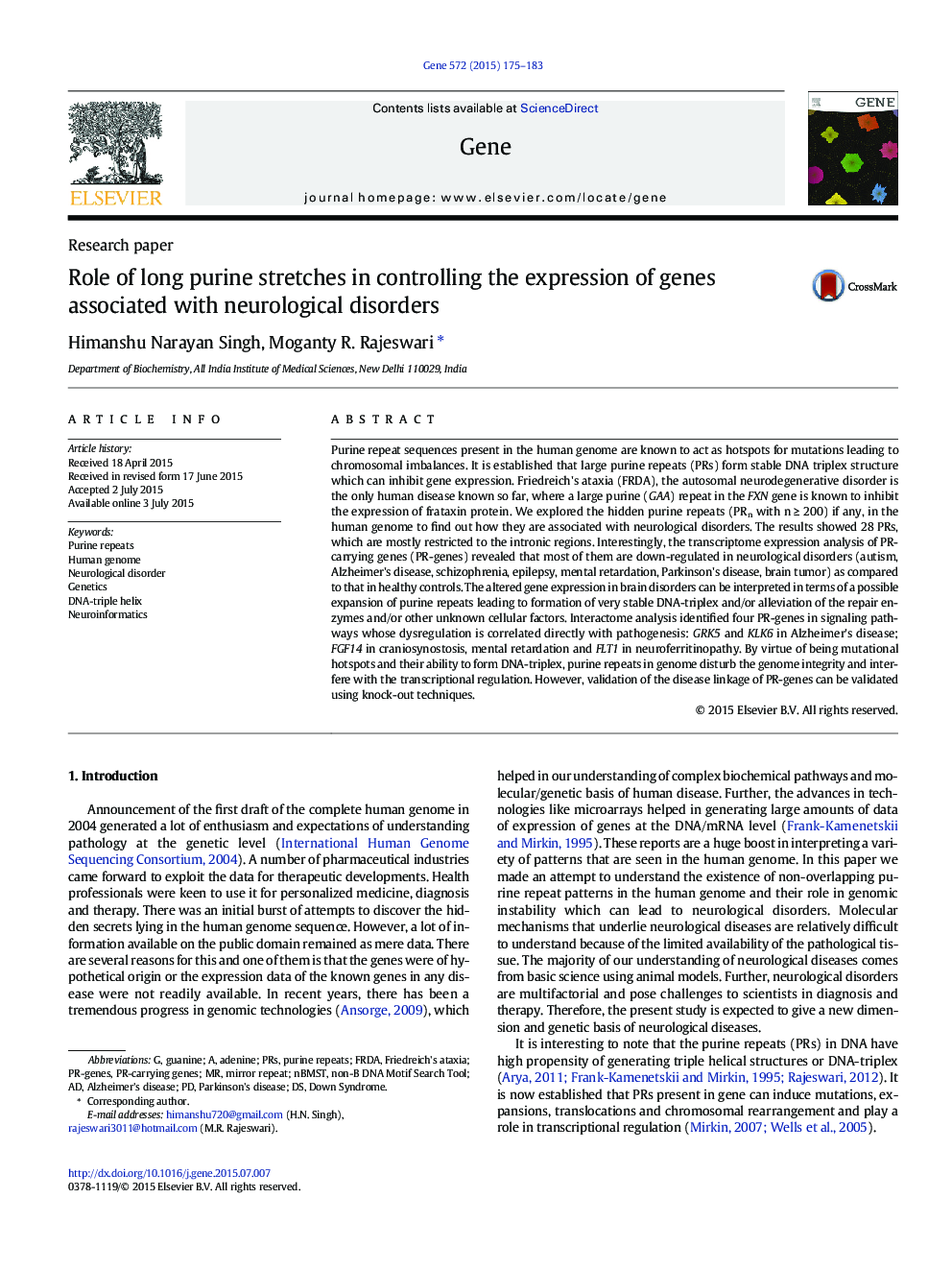| کد مقاله | کد نشریه | سال انتشار | مقاله انگلیسی | نسخه تمام متن |
|---|---|---|---|---|
| 2815528 | 1159876 | 2015 | 9 صفحه PDF | دانلود رایگان |
• Long stretches of purine repeats (PRs) form stable DNA triplex structures.
• PRs in gene are vulnerable to mutations, can deregulate gene expression and therefore are pathogenic.
• We searched for long PRs in human genome.
• Analysis revealed association of 27 PR genes with neurological diseases.
• These PR-genes identified in this study can be used as therapeutic targets in neurological diseases.
Purine repeat sequences present in the human genome are known to act as hotspots for mutations leading to chromosomal imbalances. It is established that large purine repeats (PRs) form stable DNA triplex structure which can inhibit gene expression. Friedreich's ataxia (FRDA), the autosomal neurodegenerative disorder is the only human disease known so far, where a large purine (GAA) repeat in the FXN gene is known to inhibit the expression of frataxin protein. We explored the hidden purine repeats (PRn with n ≥ 200) if any, in the human genome to find out how they are associated with neurological disorders. The results showed 28 PRs, which are mostly restricted to the intronic regions. Interestingly, the transcriptome expression analysis of PR-carrying genes (PR-genes) revealed that most of them are down-regulated in neurological disorders (autism, Alzheimer's disease, schizophrenia, epilepsy, mental retardation, Parkinson's disease, brain tumor) as compared to that in healthy controls. The altered gene expression in brain disorders can be interpreted in terms of a possible expansion of purine repeats leading to formation of very stable DNA-triplex and/or alleviation of the repair enzymes and/or other unknown cellular factors. Interactome analysis identified four PR-genes in signaling pathways whose dysregulation is correlated directly with pathogenesis: GRK5 and KLK6 in Alzheimer's disease; FGF14 in craniosynostosis, mental retardation and FLT1 in neuroferritinopathy. By virtue of being mutational hotspots and their ability to form DNA-triplex, purine repeats in genome disturb the genome integrity and interfere with the transcriptional regulation. However, validation of the disease linkage of PR-genes can be validated using knock-out techniques.
Journal: Gene - Volume 572, Issue 2, 10 November 2015, Pages 175–183
